From the game description on BGG: “The Oranienburg canal, which gave this game its name, was built between 1832 and 1837 in Brandenburg. The Havel River was difficult to navigate near the Oranienburg mills, so a canal was built from the Havel that crossed the older Ruppin canal, thereby forming the Oranienburg canal cross. During the industrialization in the 19th century, lots of companies and businesses were formed at this important waterway. Moreover, additional streets and railways were built.”
I’ll be the first to admit, I am no geography expert. Aside from the name of the capital and a few of Germany’s major cities, I know next to nothing about the region. You’d be forgiven for not knowing where Oranienburg, Germany is located, much less the canal that bears its name. So, just to help you better visualize where this canal is located, here’s a map of Germany:
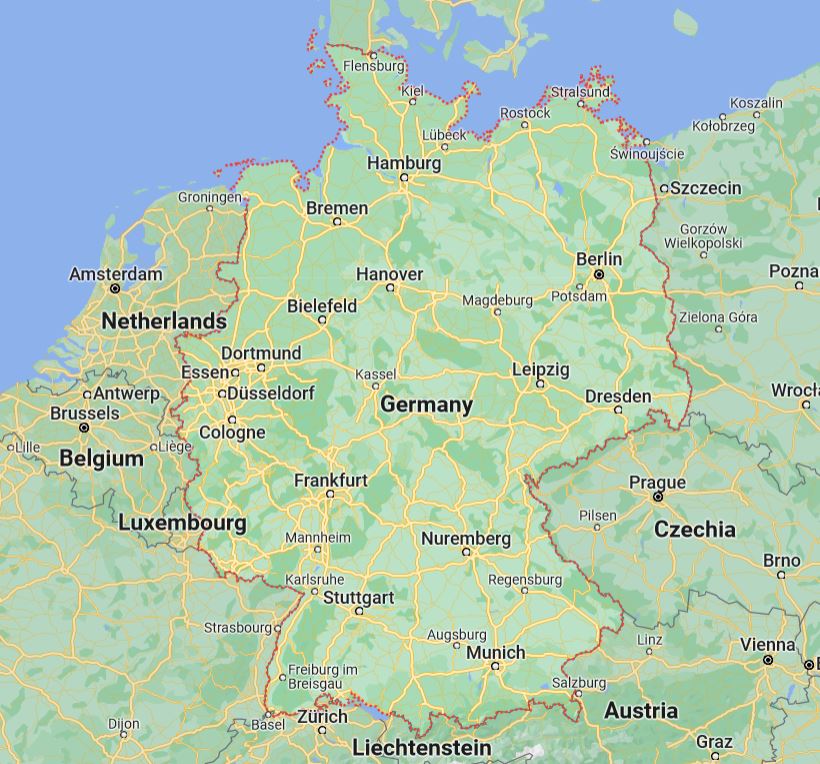
And here’s a zoomed in view showing the canal in relationship to Berlin, the German capital:

While having an understanding of its physical location within the universe isn’t a requirement to understand and do well at Oranienburger Kanal, having at least a little knowledge of it will help you appreciate the thematic feel that Uwe Rosenberg was aiming for.
How to Build a Canal
In Oranienburger Kanal (OK), players take on the role of developers trying to build up the region by constructing structures and linking those structures together via routes and bridges. Each structure is represented by a card. Each of these has a cost associated with building it and a unique ability that will fire off when the card is activated (which can happen twice—once when the structure is surrounded by routes and once when it has been connected to its neighbors by at least two bridges). These abilities typically reward the player with points and/or resources based on how many bridges are connected to the structure or which types of routes surround it.
Via worker placement, players take turns selecting one of the game’s actions to carry out on their turn. These actions are how players collect the resources needed to build routes and structures as well as actually build them. Resources gained and spent are tracked on a separate Supply board (a la Glass Road).
At the end of the game, players tally up their points, and the player with the most points wins.
Of course, this is a very high-level overview of how the game is played. If you think you’ve seen enough and just want to know what I think, feel free to skip ahead to the Thoughts section. Otherwise, read on as we learn how to play Oranienburger Kanal.
First, Prepare the Site
Preparations to build the actual canal began with a lot of digging. Thankfully, the set up for a game of Oranienburger Kanal isn’t going to require as much effort.

First, each player receives a player aid and a Supply board along with one of each of the resource types—wood, clay, ore, brick, and iron. The dial on the Supply board is turned so that the arrow on the dial lines up with the arrow printed on the board. Then the resources are placed into their starting locations.
Each player also begins with an Industry board. One side of the board has some pre-printed routes on it while the other has none. The players collectively decide which side they wish to play with in the upcoming game and turn their boards to the chosen side.
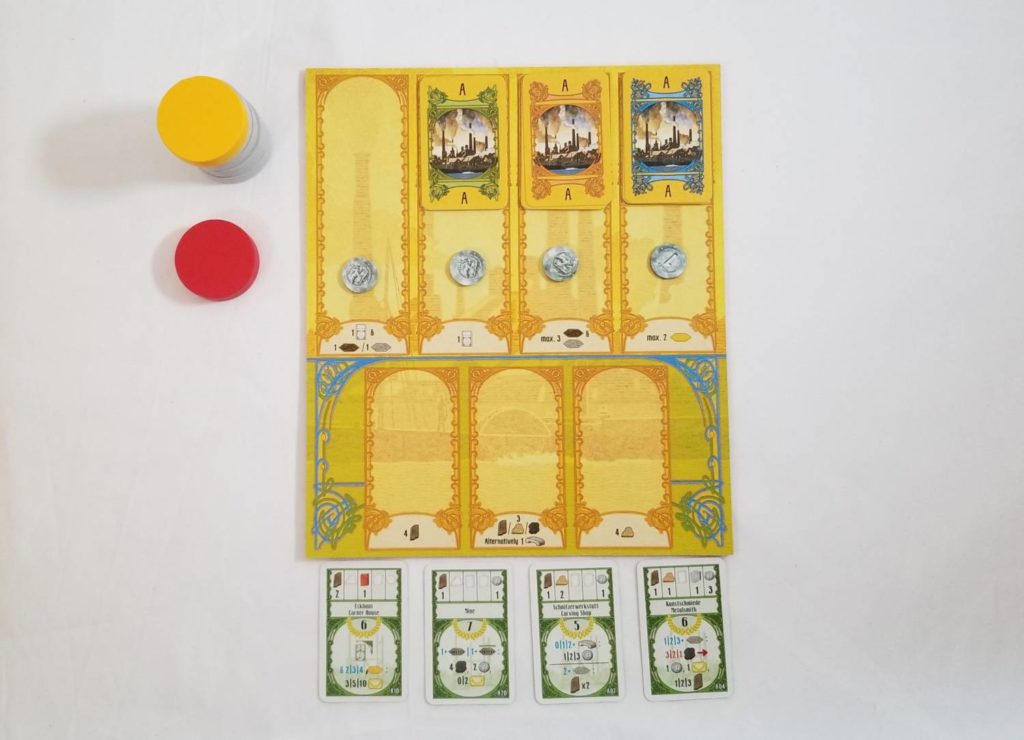
Then, the main board is laid out and some cards are placed onto it in the marked spots. There are two different decks of cards included in the base game box—Deck A and Deck B. The players decide which deck to play with, separate it into its different colors, and then shuffle the colors to form their own decks—green, orange, and blue. Nine green cards, seven orange cards, and eight blue cards are needed. Any remaining cards are placed back into the box.
The main board is divided into seven action locations. One thaler (the game’s monetary unit) is placed onto each of the four upper action spots. Then, four cards are drawn from the green deck and placed face up beneath the bottom row of action spots. Once this has been done, select a starting player, give them the stack of Action discs (with the gold disc on top) along with the red Starting disc, and you’re ready to begin.
Next, Dig the Canal
At the beginning of a round, the person possessing the Starting disc moves the entire stack of Action discs to one of the seven action locations and then performs the action. Once they have finished, the next player moves all but the bottom Action disc to a different location. This continues until the end of the turn wherein the gold Action disc was the one placed.
Several of the available actions will garner you resources of one kind or another. Resources gained are tracked on your Supply board. Whenever you gain a basic resource (wood, clay, ore), pick up the matching resource marker and move it a number of spaces counterclockwise equal to the amount you collected, to a maximum of eight. If you gain one of the upgraded resources (brick and iron), those markers are moved in a clockwise position, to a maximum of six.
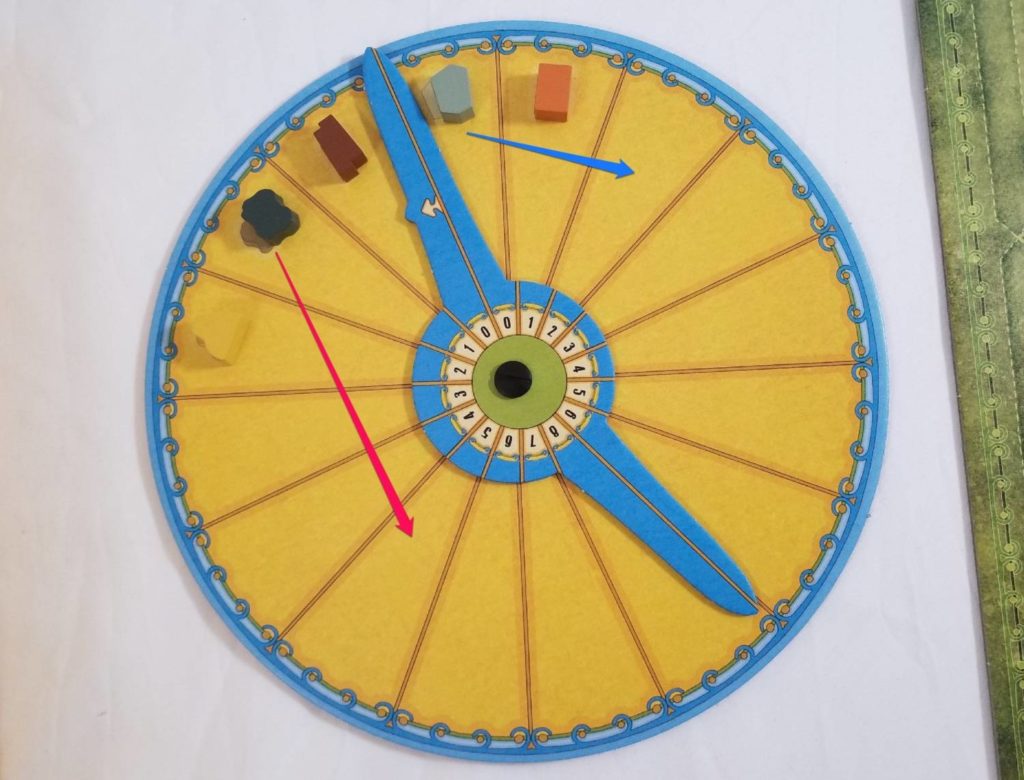
Spending resources just means moving the markers in the opposite direction, equal to the amount spent. If a resource marker is ever sitting in the zero position, you don’t have any of that resource to spend!
Thankfully, there’s a way to gain additional resources in a pinch if you ever need them by paying thalers as a free action. However, the more you buy, the more expensive it gets, so shop wisely. Also, if you have at least one of every basic resource, you can spend two thalers to move the Supply board dial one space counterclockwise, which has the net effect of spending one of each basic resource in order to gain one of both upgraded ones.
Finally, Add Water
Other actions allow you to build routes and bridges as well as purchase structures to add to your Industry board.
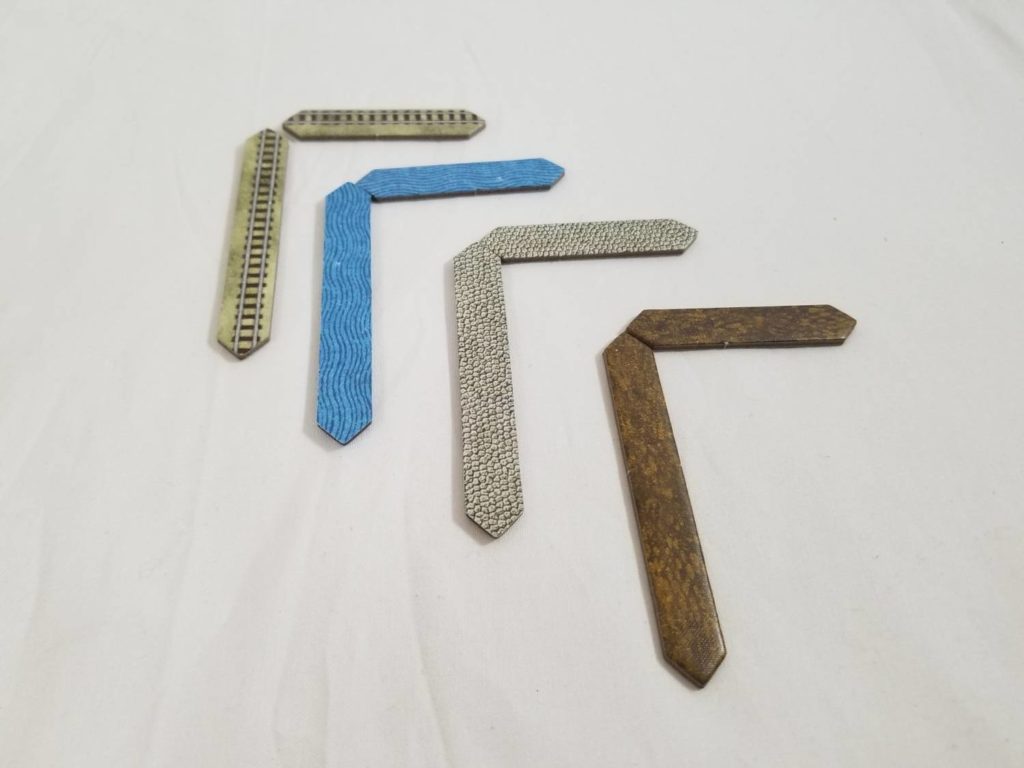
Each type of route has a cost associated with building it. Dirt paths can be built anywhere, but will cost you a clay. Streets can also be built anywhere, but will cost you a brick. Canals cost three thalers to build and must be attached to previously built canals, but will also gain you two clay when they are constructed. Railroads must be connected to other railroads and cost one wood and one iron to build. It is also important to note that dirt paths can be overbuilt at a later time. Bridges cost one wood to build, but can only connect two neighboring structures that have a route between them over which the bridge extends.
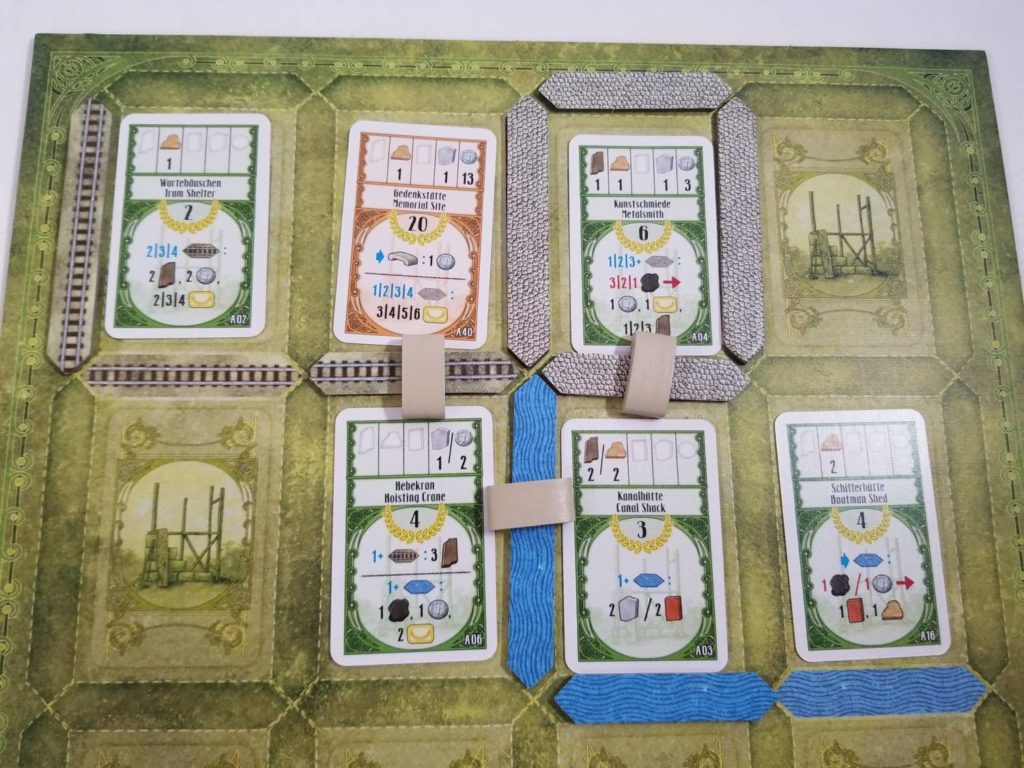
Purchased structures can be added anywhere, but you’ll usually want to carefully consider their placement based on the structure’s ability. For instance, if you have a structure that rewards you based on how many canals are built around it, you’ll typically want to surround that structure with canals. And you’ll usually want to build other structures in the vicinity that also benefit from canals as well. This synergistic building is key to doing well at OK.
Each card is numbered and there is a handy Glossary provided for each deck that describes what the iconography on the cards is telling you. And, trust me, these Glossaries will see plenty of use!
Now, Enjoy the Fruits of Your Labor
As mentioned earlier, each structure has the potential to activate twice over the course of the game: when it is completely surrounded by routes and when it is connected to by a second bridge. Each structure can only ever be surrounded by four routes, and overbuilding one of these at a later time will not cause the structure to activate again. Nor will adding a third or fourth bridge cause it to activate again.
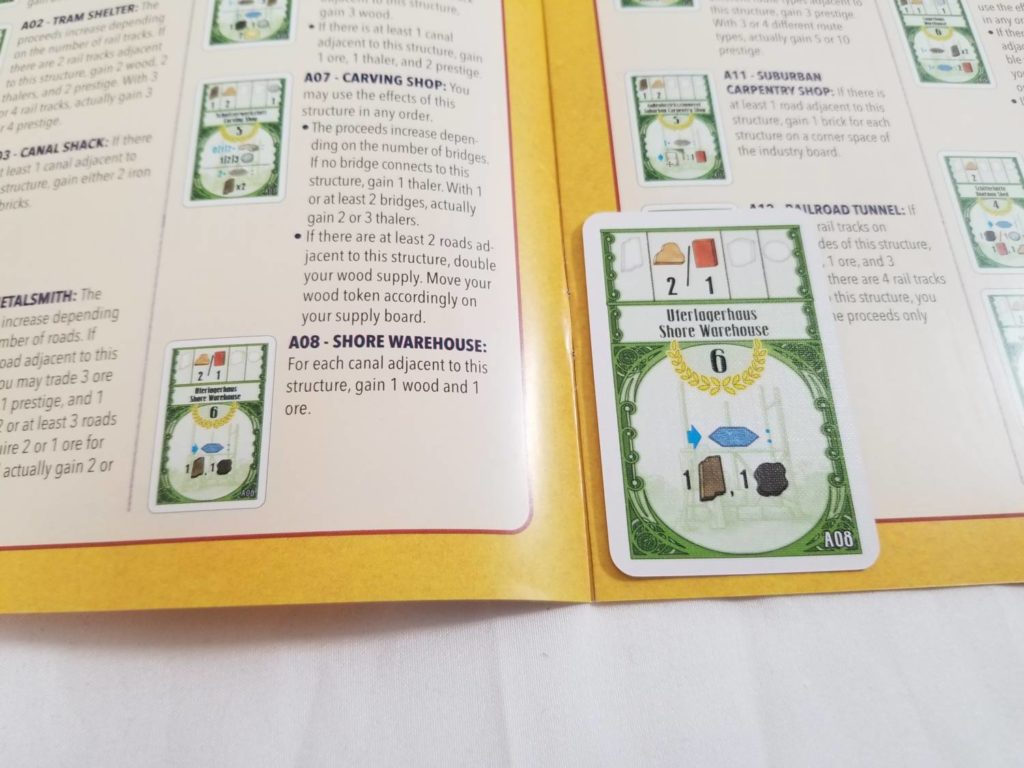
To better make sense of that, let’s consider this green card from Deck A: Shore Warehouse (A08). Shore Warehouse reads: “For each canal adjacent to this structure, gain 1 wood and 1 Ore.”
So, the moment that Shore Warehouse is surrounded by routes, you’ll examine each of them to determine what kind of routes they are. If, for example, there are 2 canals, a street, and a dirt path, you would only receive two wood and two ore. Then, if you connected this card later on to at least two of its neighbors with bridges, you’d receive that same number of resources again. That is, unless you’d managed to overbuild the dirt path with a canal before the second bridge was built. Then you’d receive an additional wood and ore. Other cards may reward you with prestige points and these are collected in the form of Prestige tokens.
At the end of a round, the card row is refilled, each of the top four actions receives another thaler, and each of the bottom three that was not selected during the previous round receives one as well. Then, players have the opportunity to move the dial on their Supply board one space counterclockwise for free, as long as they have at least one of each basic resource. Then, the Action discs are collected and passed to the next player who begins the next round.
As the green deck runs out, you’ll move into the orange deck—which adds an extra card to the card row. After the orange cards run out, you’ll uncover the blue cards, adding yet another card to the card row. It is worth mentioning that as each card deck runs out, a new action will be revealed.
The game ends at the end of the round in which the last blue cards are added to the card row. Once the game has ended, players total up the points received for each non-dirt path route, points for leftover resources, and negative points for unbuilt routes. This point total is added to any Prestige markers they received during the game. The person with the most points wins.
Thoughts
If you’re a Rosenberg fan, you’ll find a lot of things about OK that are familiar. It’s like a collection of Uwe’s greatest hits. First, there’s the clever card play and worker placement aspects of Agricola. Then, there’s the spatial management aspect of where to build your structures to be the most effective like you’ll see in Ora et Labora and Glass Road. Like A Feast For Odin and Patchwork, each player begins the game at a hefty victory point deficit they must overcome. And, of course, Rosenberg has demonstrated, yet again, his mastery of the Supply wheel which first appeared in Le Havre: the Inland Port, and was later improved upon in Glass Road.
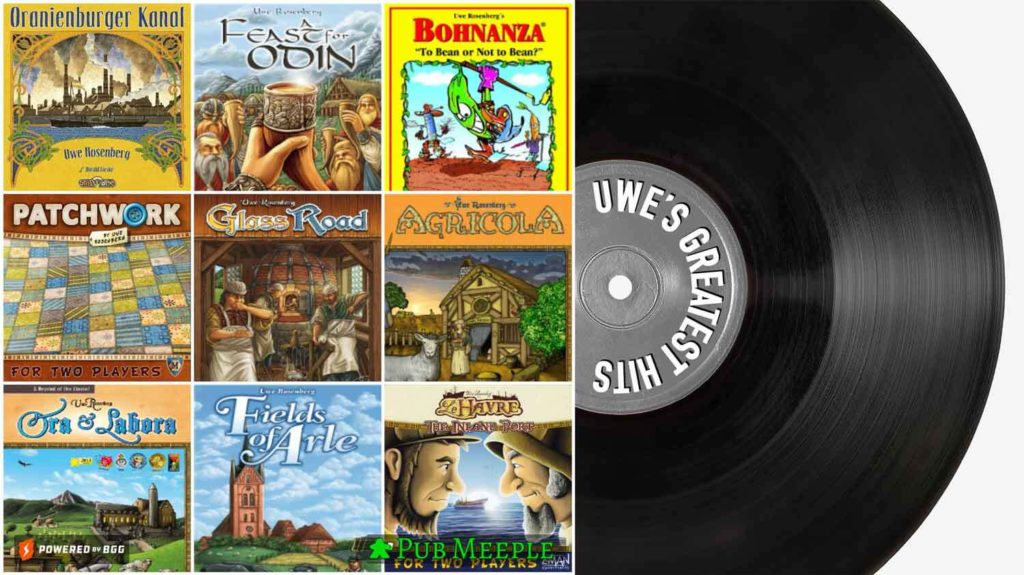
But the true brilliance of OK is the exciting moments it creates when your carefully laid plans come together in a brilliant flurry of combo-tastic action, one thing chaining off of another. As I hinted at with my previous example of Shore Warehouse, OK asks…no, demands…you carefully plan where you build each and every structure. But, it goes further than just constructing them in such a way that they share specific route types. That’s important, but it isn’t everything.
For example, some structures will reward you for the overall length of a specific route type’s network. Some may award you based on how many structures are in specific positions on your Industry board. And then there’s the consideration of where to build your bridges. Building a bridge that causes a structure to activate is awesome. And if that structure should allow you to build a bridge which causes another structure to activate? Well, that’s even better than that. This aspect of OK, this setting up dominoes and watching them fall, is exciting. It’s a heady feeling I’ve come to associate with roll and writes like Hadrian’s Wall or Fleet: the Dice Game.
Oranienburger Kanal is pure genius, a testament that despite some less-than-stellar offerings over the past few years—Tulpenfieber, Armonia, and Framework come to mind—Herr Rosenberg is still at the top of his game. If this isn’t his finest game ever, it’s certainly his finest two-player one; even better than Fields of Arle, which is quite a feat. And I haven’t even cracked open the B-Deck yet, much less the other four decks from the expansions. That’s a TON of replay value. There’s even an extremely easy to manage, yet super challenging solo mode included. I’ve been so desperate to play that I’ve even dug into that, a Thing Which David Never Does. It’s just that good.
If you’re wondering whether or not you need to add Oranienburger Kanal to your collection, here’s a helpful flowchart to assist you in deciding:
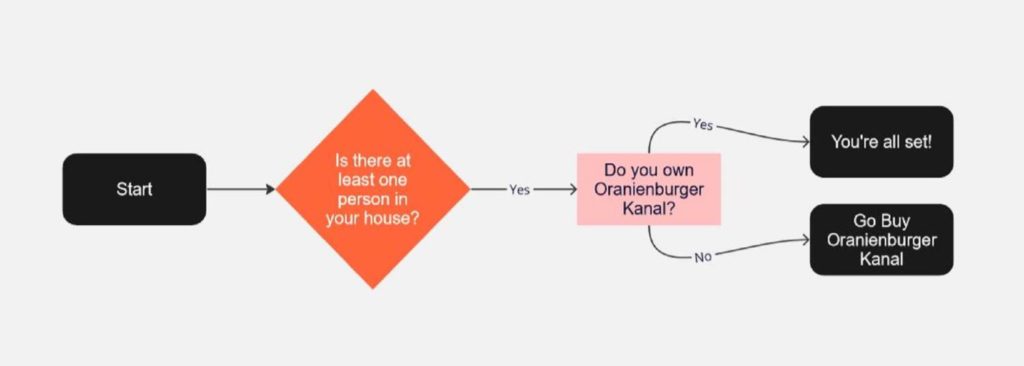


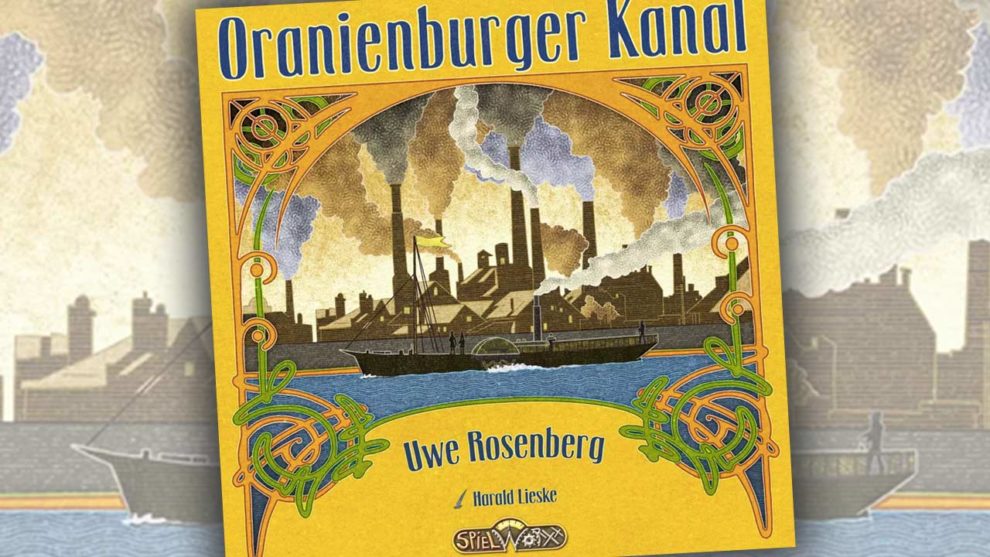


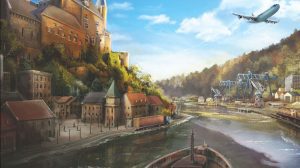





Add Comment